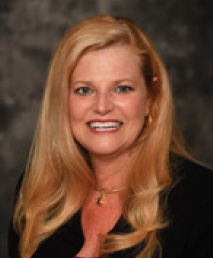 Presented by Susan Paolo, AAMS®, MBA, First Vice President – Investment Officer
Presented by Susan Paolo, AAMS®, MBA, First Vice President – Investment Officer
Retirement planning can be challenging, but creating a timeline can help ensure your savings stay on track. Here are some expert tips for helping to ensure your retirement plans are on schedule at every stage.
Set an income goal—and know that it could change. For younger workers, it can be difficult to determine how much income will be needed in retirement and how much their income will increase over their lifetime. Many people start out looking at an income replacement ratio of around 80%. That said, when you’re younger, 80% of your income is not going to be close to 80% of your income at retirement. That will change over time.
Plan to increase your savings rate. If you’re 20 years old, a savings goal of 10% of your current salary per year is a good start. By age 30, you should be putting away at least 15% per year.
If you have access to a qualified employer-sponsored retirement plan (QRP), such as a 401(k) or 403(b), start there. If your employer offers matching contributions, consider contributing at least as much as the match. This is free money you don’t want to pass up, and it can help you get to the right percentage.
At the same time, consider a Roth IRA or, if available, the designated Roth account option in your 401(k) for their potential tax-free distributions.
Your savings rate should increase as you age; at the same time, you should explore additional investment options so you’re getting the most benefit now and when you’re in retirement.
Sketch out how long you could be in retirement. When creating a retirement timeline, one of the most difficult factors is estimating how long you can expect to be in retirement. We suggest planning for 20 to 30 years but strongly recommend a contingency plan in case something forces you into an unexpected early retirement, such as health problems, perhaps, or an unforeseen layoff.
One way of thinking that can help you get there: Plan to retire at age 55. This will allow you to be prepared for unanticipated events, and any money you make by working past that age will be a bonus.
Set the steps to reach your goals. If you’ve gotten a late start on retirement planning, or if
you’re rethinking your timeline around a plan to retire at age 55, there are effective actions you can take now to help pursue your goals.
No matter when you start, planning a retirement timeline is effective only if you budget for saving—and stick with that budget. Your financial advisor can help guide this conversation.
A final tip for those in their 60s: You may want to withdraw money earlier than you think. If the bulk of your money is in qualified retirement plans or IRAs, most of the money you’ll receive in retirement is taxable—you can even bump yourself into a higher tax bracket. At age 70½, retired minimum distributions (RMDs) kick in, so if you’re retired at age 62, for example, take some money out then—this will lessen the impact of larger distributions later on.
UP-COMING EVENTS
Seminars:
“Social Security” Wed. Aug 22 at Bass Lake Taverne in Chardon, OH
“Long Term Care” Wed. Sept 12 at The Lodge at Geneva-on-the-Lake
“Long Term Care” Wed. Oct 17 at Bass Lake Taverne in Chardon, OH
Financial Fitness Fair
Coming Saturday, November 17
Location is to be determined.
CALL (440) 992-1515 for information.
























